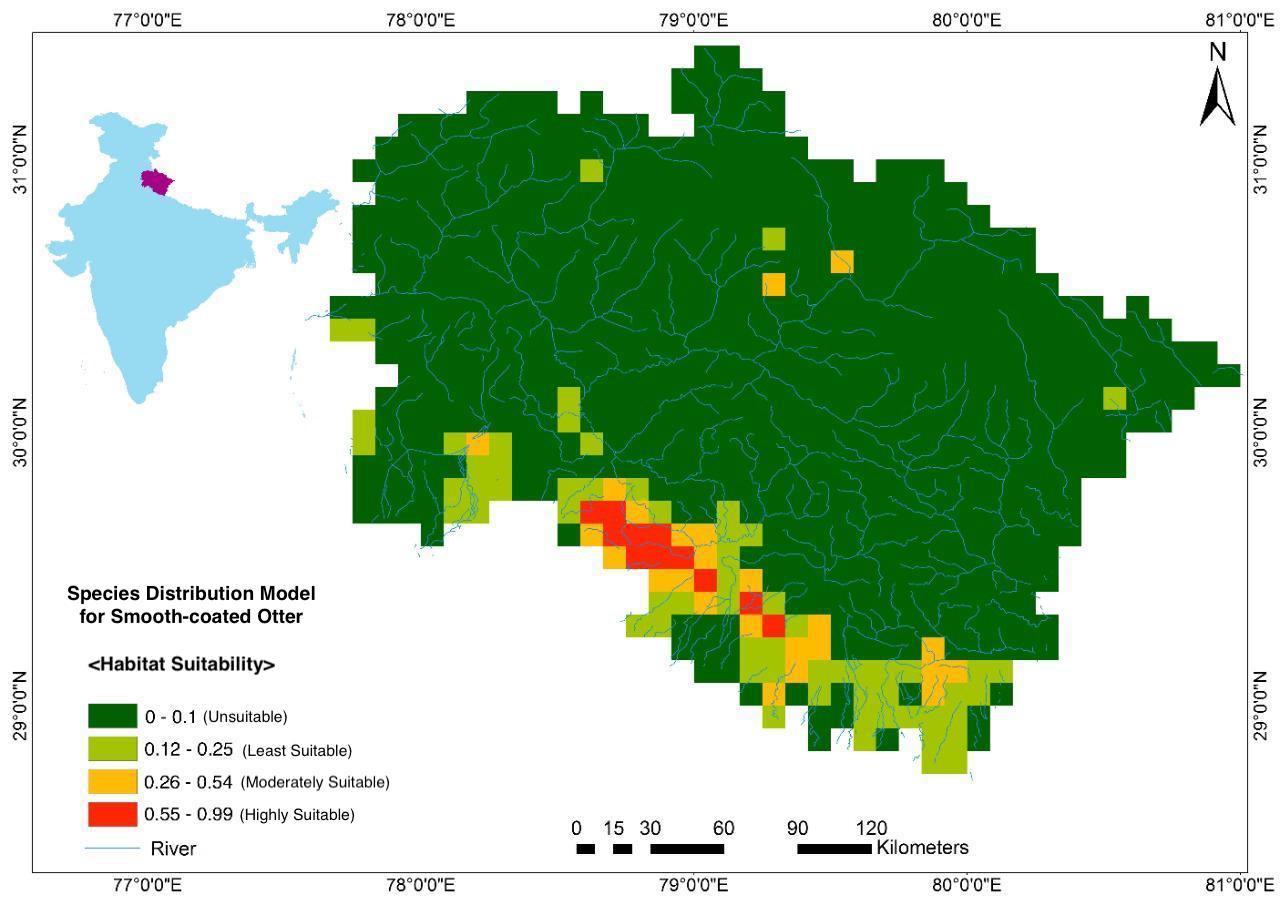
Modelling the Distribution of Smooth-coated Otter using Indirect Evidences
-
Species
Smooth-coated Otters are small, carnivorous mammals. Their occurrence relates to healthy ecosystems with clean waters and abundant prey. Dearth of scientific information on the species ecology and behaviour leads to constraints in formulating species conservation strategies. Mapping species occurrence forms a prerequisite criterion for its conservation; hence species distribution models form an extremely significant tool.
In this study, Maximum Entropy Modelling (MaxEnt) was used to map the distribution of Smooth-coated Otters and predict habitat variables that govern species occupancy within and in adjacent freshwater ecosystems of Corbett Tiger Reserve (CTR), Uttarakhand. Indirect evidences such as Otter spraints and Otter den sites which confirmed species occurrence from rivers Ramganga and Palain within CTR were considered. A total of such 46 datasets were used for analysis.
The habitat suitability model for the Smooth-coated Otter in CTR was successfully built using a high-performance value of AUC 0.983. The results also predicted Rivers Nayar, Mandal, Sonanadi, Khoh, Phica and Kosi as potential suitable habitats for Smooth-coated Otters; apart from the rivers Ramganga and Palain in the CTR. The significant habitat variables contributing to habitat suitability were identified as: elevation (height from the water source), escape cover (riparian vegetation cover), rainfall (average monthly precipitation), soil characteristics and, number of streams joining the main river channel (land cover coverage). Otters tend to avoid steep slopes as it acts as a physiological deterrent for them. When traveling long distances, Otters form tunnels of thick grasses and dense shrubs along the river bank. This acts as an escape cover and provides refuge from predators on land. A good amount of rainfall especially during the monsoon, acts in favour of Otters. During this time fishes move upstream for spawning, when Otters can chase and catch them easily as their prey. Otters use sandy soil for grooming and clayey soil for digging den sites. Eddy currents are formed where a number of streams join the main river channel. This influences fish occurrence and thus form good feeding grounds for Otters.
The amphibious nature of Otters allows them to disperse over wide areas of riparian landscape and thus require undisturbed habitats. The potential occurrence of Otters in adjacent freshwater ecosystems of CTR is a significant outcome of the study. It is thus essential to develop species conservation management strategies at the landscape level integrating wetlands management particularly in the adjacent non-protected areas. This is possible through creation of corridors of suitable riparian habitat linking wetlands allowing for free movement of the species and greater protection.

Habitat suitability map for Smooth-coated Otter occurrence in Corbett Tiger Reserve, Uttarakhand
Author: Ms. Apoorva Sodhi
Author is pursuing her Master’s in Wildlife Sciences from the Amity Institute of Forestry and Wildlife, Amity University, Noida, Uttar Pradesh and is currently interning with Wetlands International South Asia. she can be contacted at [email protected]
